Leading Mobile Phone Manufacturer Rumored to Plan "Dual-Camera + Magnetic Lens" Design, Meeting Users' Demand for Handling and Imaging Quality?
![]() 08/26 2025
08/26 2025
![]() 463
463
Magnetic lenses are unlikely to become mainstream.
Here’s how it all began: Recently, an intriguing rumor has been circulating within the industry.

(Image source: Weibo @Digital Gossip Station)
It is rumored that a leading manufacturer is covertly planning a groundbreaking imaging flagship. Instead of relying on stacking camera sensors or thickening the camera module, the core solution revolves around a seemingly retro design: native dual cameras coupled with an external lens module attached via magnetic force.
In today’s era where “fewer lenses equate to less value, and an unobvious module implies less professionalism,” this approach stands out as a countercurrent.
We have just witnessed a year of relentless bombardment by manufacturers’ “super-sized” flagship models, with camera modules rivaling the thickness of compact cameras. From Xiaomi 15 Ultra's design compromise to accommodate the Leica super telephoto lens to vivo X200 Ultra's imaging unit that nearly matches the body thickness, they have sparked heated discussions on social media.
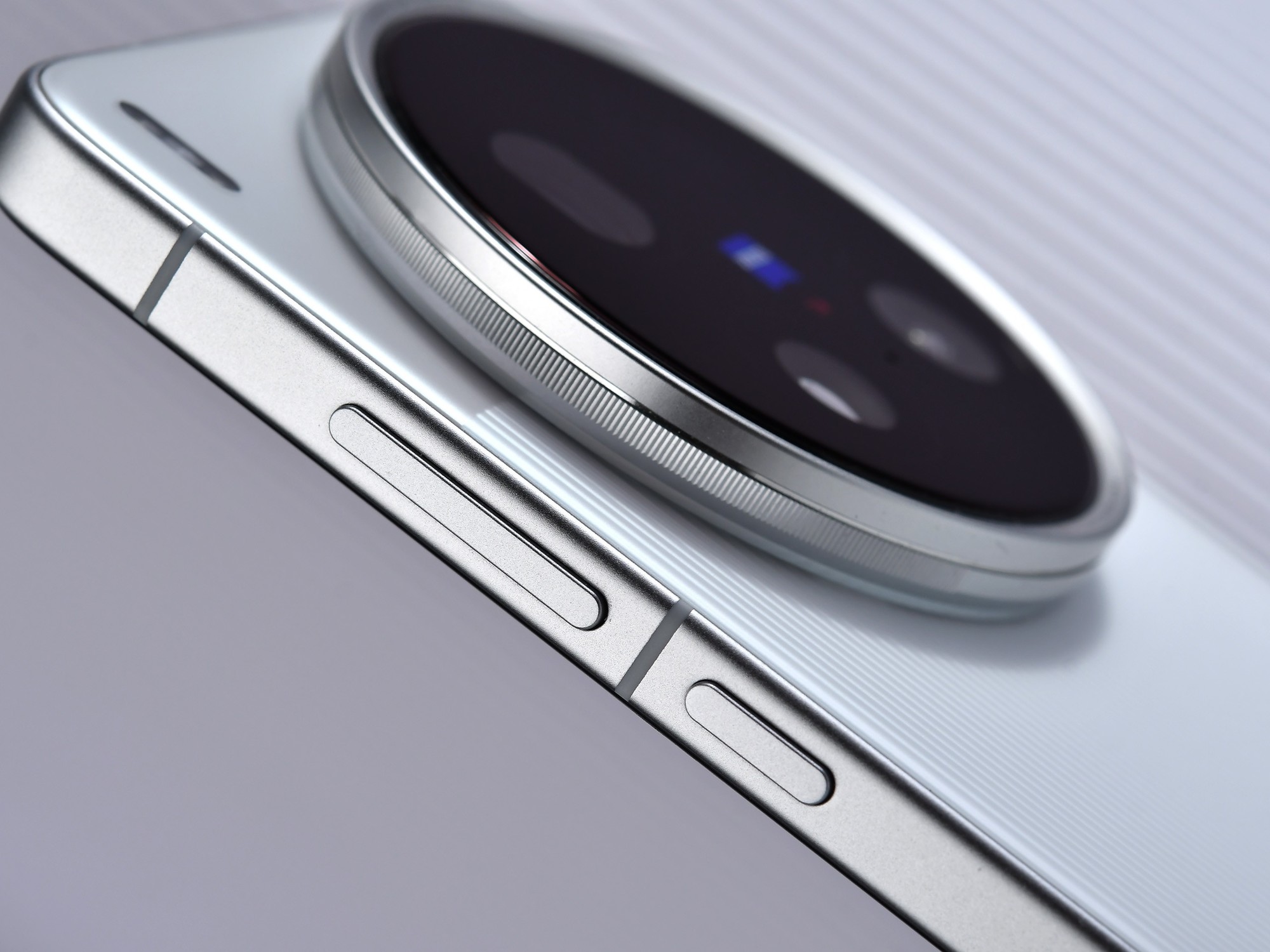
(Image source: vivo)
Constrained by body thickness and weight, mobile phone manufacturers have limited room for upgrades in sensor size, lens focal length, etc. The development of mobile phone imaging seems to have fallen into a physical dilemma: “if you want good image quality, you must accept a bulky design.” Against this backdrop, the sudden emergence of a “dual-camera + magnetic lens” solution naturally raises doubts.
Is this a clever workaround for manufacturers in the specs race, or a gimmick doomed to repeat history? Let’s delve into the truth together.
Will the 14-year-old external lens finally make a comeback?
To answer this question, we need to rewind a decade.
In 2011, an accessories company named Olloclip introduced the first mobile phone external lens for the iPhone, marking the birth of this category. Unlike today’s external lenses that focus on “filters” or “telephoto,” these early lenses were primarily used for fun applications such as fisheye, wide-angle, and macro photography.
The actual shooting effect was more for amusement than anything else.

(Image source: theregister)
With the iPhone 7 Plus ushering in the multi-camera era, these manually installed accessories with mediocre image quality were swiftly overshadowed by the phone’s natively integrated wide-angle and telephoto lenses. Facing all-round defeat in product capabilities, market influence, and market size, they inevitably declined.
However, history repeats itself.
After mobile phone imaging plunged into the depths of “computational photography” in 2023, the over-sharpening and algorithmic smearing of AI have left some users who pursue authentic optical quality feeling fatigued. Amid this trend towards basics, external lenses have returned to the scene in an entirely different guise.
At the 2025 Mobile World Congress (MWC25), Xiaomi showcased a “modular optical system.”
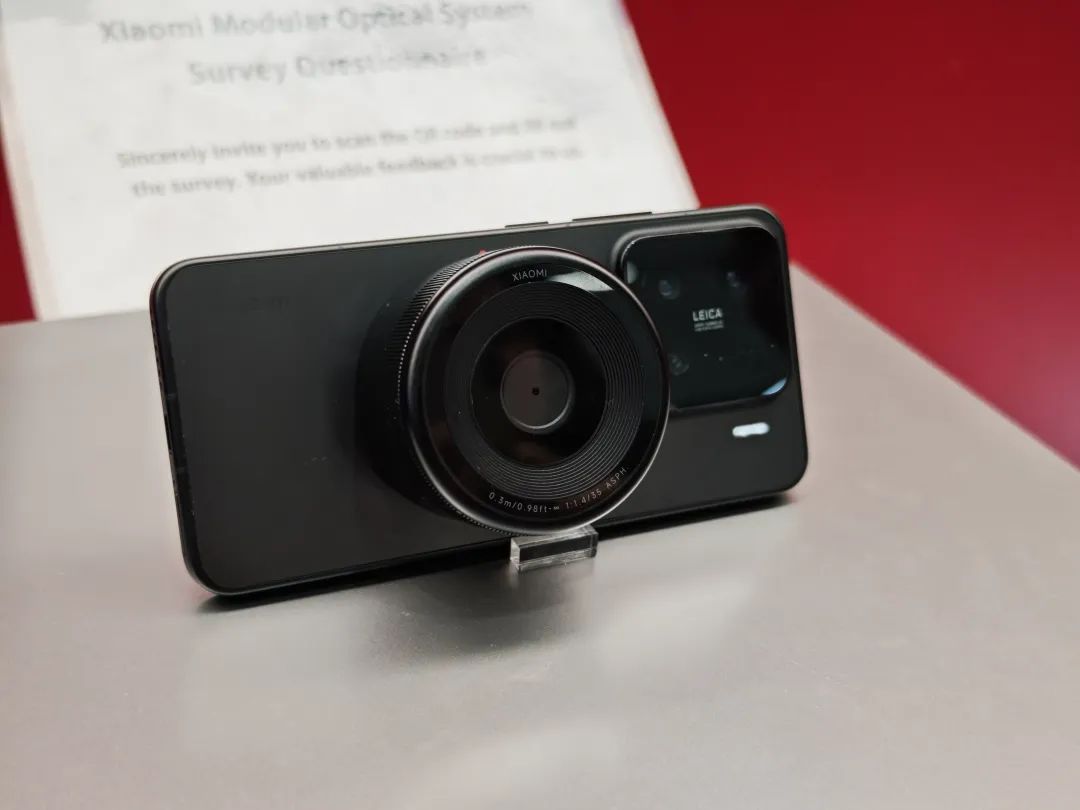
(Image source: LeiTech)
This is not a simple external lens but a comprehensive camera module integrating an M43 sensor and a professional lens set equivalent to 35mm. With the proprietary high-speed LaserLink technology, users can capture photos directly with their phones by attaching the lens to the back.
It is worth mentioning that the LeiTech reporting team had hands-on experience with this product at the event. Colleagues who reported on-site stated that this modular optical system is highly mature, seamlessly combining camera-grade optical hardware with the powerful ISP computing power of mobile phones, which is indeed a brilliant solution to the problem of insufficient internal space in mobile phones.
Of course, Xiaomi is not the only explorer. As another heavyweight in the imaging field, vivo is also attempting this path.
However, unlike Xiaomi, vivo focuses solely on telephoto lenses. They prepared a vivo Zeiss 2.35x teleconverter for the vivo X200 Ultra, theoretically enabling the periscope telephoto lens to reach a pure physical focal length of “native 200mm.” Combined with algorithmic optimization, it can achieve a highly usable 35x zoom and a viewable 70x zoom.

(Image source: LeiTech)
We have tested this, and the actual imaging effect is truly impressive.
With the original telephoto lens already remarkable, the X200 Ultra, when equipped with the teleconverter, shows a significant difference at the 200mm end, with noticeable improvements in brightness, overall purity, and color.
Most importantly, it is highly usable even when handheld.
Yes, no unique skills or tripods are needed; clear and sharp ultra-telephoto photos can be captured simply by holding the phone.
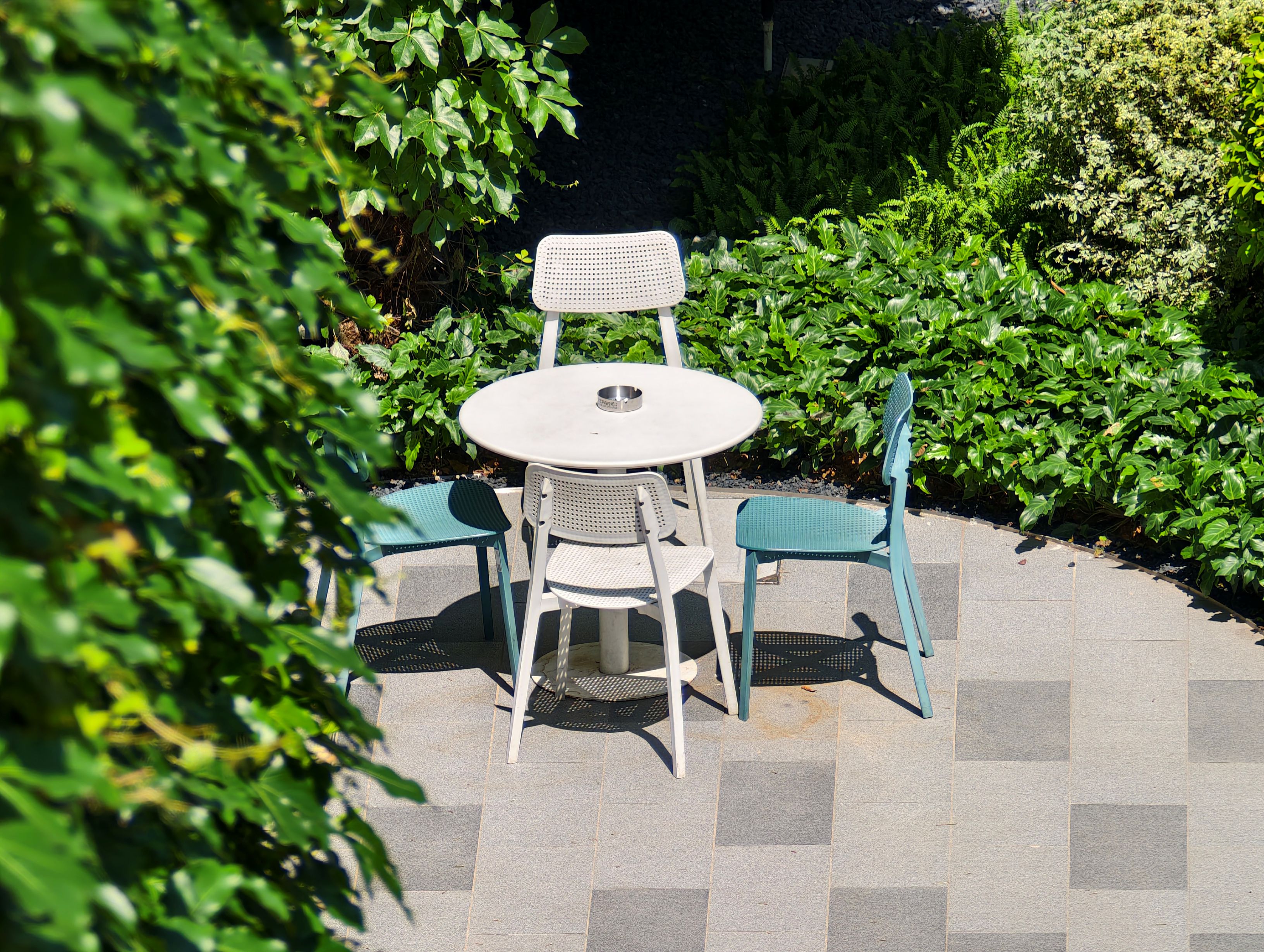

(Image source: LeiTech)
In my view, the fully upgraded sensor brings exceptional imaging effects to mobile phone imaging, covering all scenarios of mobile phone photography, and also allows the concept of external lenses to return to the mainstream market as high-end creative tools.
Why are magnetic lenses unlikely to become mainstream?
After reviewing this history, let’s shift our focus to today’s rumor about “dual-camera + magnetic lens.”
According to current information, this product fundamentally differs from previous mass-produced external lenses—it weakens the native imaging capabilities, with the native imaging solution being merely adequate. Enhanced imaging capabilities can only be achieved through additional lenses to compete with competitors’ super-sized models.
There are three key points in this statement.

(Image source: Weibo)
First, the camera module of this product should not protrude significantly. Separating the lens module from the phone theoretically frees up internal stacking space. I also hope to see a day when camera thickness is no longer constrained by the phone body.
Second, the dual-camera module of this device is highly likely to be a combination of a main camera and an ultra-wide-angle lens. Considering the “adequate” product description, I highly suspect that the main camera will not reach the 1-inch level and is likely just an IMX766 equivalent, paired with an LYT600 equivalent as the ultra-wide-angle lens.
Finally, this is not a super-sized imaging flagship and requires additional lenses to reach its full potential.
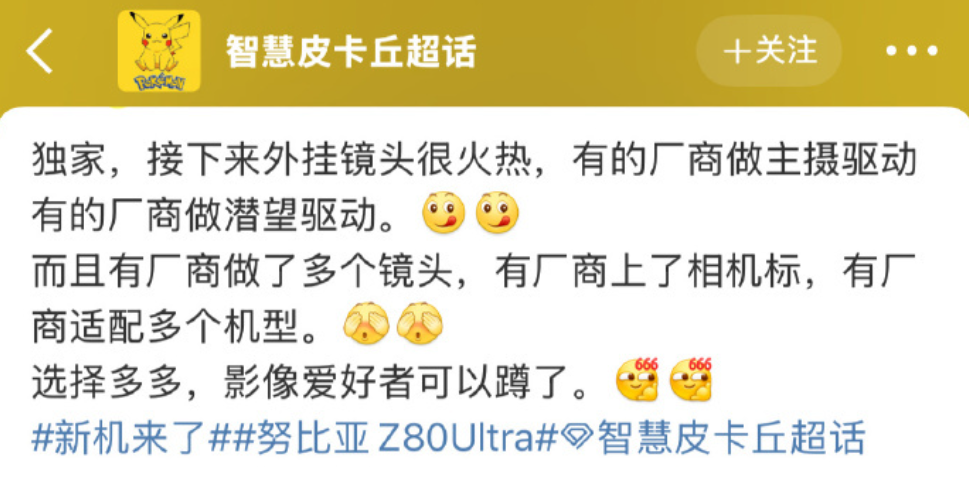
(Image source: Weibo)
At this point, interested readers may be wondering which manufacturer is so unconventional to come up with such an idea. From the limited information available, it is highly probable that Nubia is conducting research behind this rumor.
In my opinion, this prediction is quite reasonable. Mainstream manufacturers often refrain from going all out to create an innovative product, whereas smaller manufacturers like Nubia are more daring to break conventions. After experiencing the success of active cooling and true full-screen displays, they have every reason to hope for magnetic external lenses.
As for mainstream manufacturers, they need to be more methodical, innovating only after securing their established consumer base.
It is rumored that the Xiaomi 16 Ultra will feature continuous optical zoom technology, achieving a wider focal length coverage and pushing mobile phone telephoto performance to new heights. After abandoning the “dual telephoto” approach, the black factory’s super-sized model is also expected to try pairing its super-sized model with an imaging kit, complete with an external telephoto converter similar to its sibling models.
Compared to novel new designs, mainstream manufacturers may be more focused on further developing the potential of sensors.
Users want both handling and imaging quality; how can manufacturers break the deadlock?
In my view, manufacturers’ choice of the “dual-camera + magnetic lens” solution can be seen as a clever workaround after understanding the core contradiction in current imaging development.
What is this core contradiction? It is the irreconcilable gap between users’ pursuit of a sleek and lightweight design and the need for mobile phone imaging to break limits.
By decoupling the phone body from professional imaging needs, for over 90% of daily scenarios, a high-quality main camera paired with an ultra-wide-angle lens is entirely “adequate,” allowing the phone body to return to a sleek design with a simpler back.
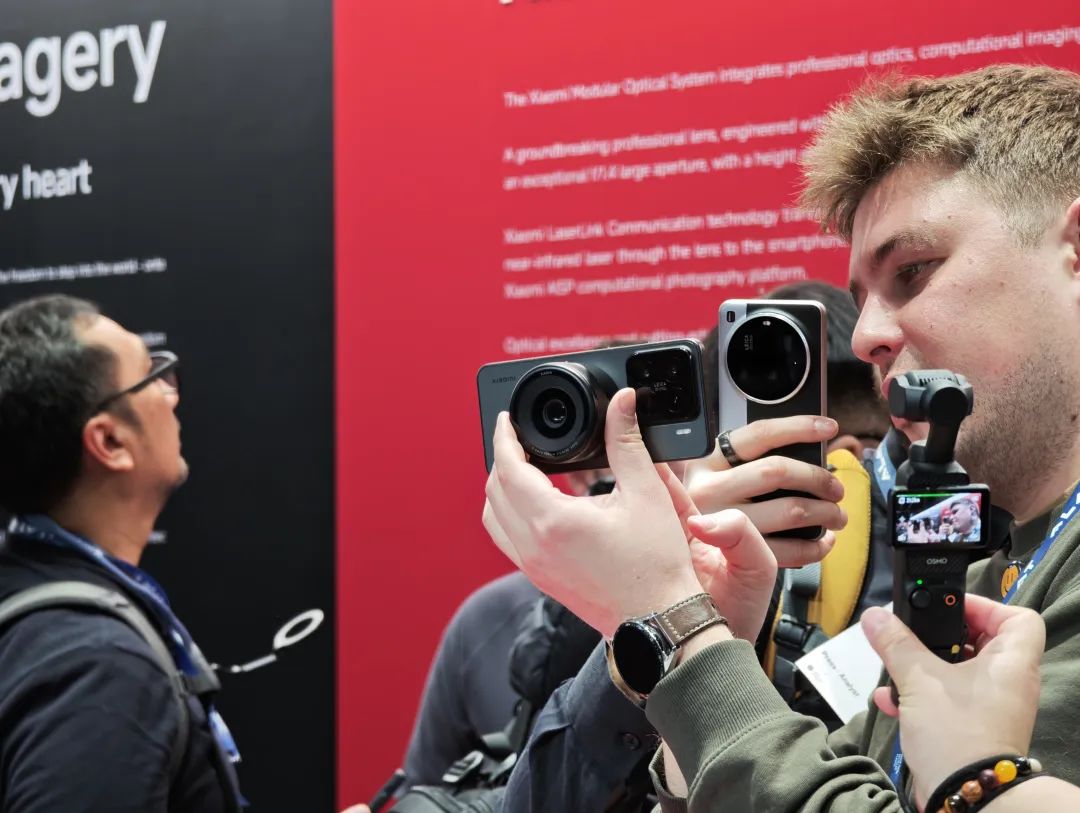
(Image source: LeiTech)
For the remaining 10% of professional users and photography enthusiasts who have telephoto, macro, or creative shooting needs, they can still satisfy these demands by magnetically attaching an independent lens module. Moreover, an external lens module, unconstrained by the phone body’s size, offers immense imagination in optical design.
Of course, this solution also faces significant challenges, requiring it to confront two curses that have plagued the concept of “modularity” for years.
The first is the fragmented user experience. The charm of photography lies in capturing decisive moments, but when you see a beautiful scene, you need to take the lens out of your bag, align it, and attach it—a process that can make countless wonderful shots slip away.
The second is connection reliability. Is the magnetic attachment secure? Is there any delay in data transmission? This is a problem that Xiaomi tried to solve when it launched the 12S Ultra concept phone and later developed the LaserLink high-speed connection technology. Only when external lenses can achieve “plug-and-play” functionality will this experience be acceptable to the masses.
Historically, both LG G5 and Moto Z stumbled on this path.
In my opinion, the key to the success of this approach lies in the manufacturer’s execution and the cultivation of user habits. The price, portability, optical quality of external lenses, as well as the stability and smoothness of their connection to mobile phones, will determine its success or failure.
If successful, it may truly open up a third path for mobile phone imaging, bringing mobile phone photography from the “integration era” to the “combination era.” If it fails, it will become yet another brave attempt that fell in the pursuit of the future. However, this courage to jump out of conventional thinking and streamline the user experience deserves our attention and expectation.
Source: LeiTech
Images in this article are from: 123RF Authentic Image Library Source: LeiTech








